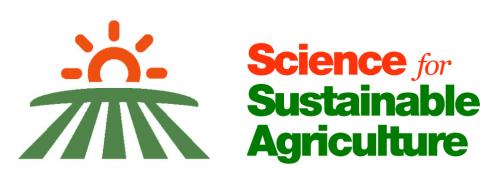An interesting report crossed my desk the other day. Entitled ‘Scaling Regenerative Agriculture: An Action Plan’, it came from the Sustainable Markets Initiative (SMI), a coalition of 12 of the world’s largest agri-food companies and organisations, including agribusinesses Bayer and Yara, food companies Mars, Pepsico and McCains, fast-food chain McDonalds and food retailer Waitrose.
An impressive line-up of globally leading businesses, and just the kind of farm-to-fork collaboration needed to provide the vision, funding and action plan to kick-start a genuine transition in our food system.
The SMI report sets out to understand why the global adoption of regenerative farming practices isn’t already happening at a greater pace and scale.
Three explanations are suggested (with my translation in brackets):
- The short-term economic case is not compelling enough for the average farmer
(it doesn’t currently make financial sense for the average farmer);
- There is a knowledge gap in how to implement regenerative farming
(no one is agreed on what regenerative farming is);
- Drivers in the value chain aren’t aligned to encourage regenerative farming
(it costs more, and the value chain, including the consumer, isn’t prepared to pay for it).
Describing the report as an ‘action plan’ is a stretch, to say the least. There is much useful discussion of where the challenges lie, and why a scaling of regenerative agriculture is urgently needed, but commitments to action, to concrete next steps, and more importantly to financial commitments by the companies involved, are conspicuously lacking.
As Canadian agronomist Shane Thomas pointed out in his own critique of the SMI report:
“..there is no financial commitment made from these organizations in the group. Not a dollar figure nor a percentage of sales or anything. One of the easiest filters to see what’s important to an organization is to see where they allocate capital and resources. If there aren’t resources being allocated commensurate with the stated size of the problem, then it’s just empty virtue signalling. When I saw this report I thought there were going to be specifics about how these organizations would collaborate across the value chain, specific KPI’s, investments being discussed and tangible incentives being implemented within the organizations. This was simply not the case. They accurately determined the roadblocks to adoption of “regenerative practices” and identified easy starting points, but that’s not new or unique.”
I share Thomas’ disappointment, but what also concerns me about the SMI report, and where this report is doomed from the start, is the lack of a clear definition behind the concept of regenerative agriculture, or consistent, meaningful metrics to benchmark and demonstrate its value to farmers, the food chain and ultimately to consumers.
The SMI report states that regenerative agriculture is not an exact science and “should not be defined too narrowly” instead suggesting that “energy will be better spent in agreeing common outcome metrics rather than chasing a concrete definition”.
That sounds great. Anyone who has read my previous SSA commentary on ‘Defining and measuring agricultural sustainability’ will know that I agree 100% with the need for consistent and meaningful farm-level metrics to help deliver the optimum balance between high-yield food production, resource use and environmental/climate impact.
But the ‘outcome metrics’ referred to in the SMI report are targeting rather nebulous objectives like “supporting the livelihoods of farm communities”, and “protecting and enhancing biodiversity at and around farms”, with no specific information about how these will defined and measured.
The report also suggests that in working towards a common set of outcome metrics SMI has adopted the principles of op2b (one plant business & biodiversity), which has proposed a set of area-based criteria to measure regenerative agriculture outcomes, such as soil organic carbon per hectare; irrigated water use per hectare; number of crops per hectare per crop cycle; and percentage of natural habitats per km2.
This is when I really smelled a rat. As I have argued previously, to be meaningful and robust, sustainability metrics must focus on measuring resource use and environmental impact per functional unit of output (ie kilograms, litres, bioavailable calories), not per area farmed. Otherwise, anyone can improve soil organic carbon, irrigated water use, and percentage of natural habitats on a hectare basis just by stopping or drastically curtailing productive farming.
This reflects the thinking of leading academics who study the sustainability and environmental impact of different farming systems.
The Science for Sustainable Agriculture launch prospectus argued strongly against Defra support for the Sustainable Food Trust’s Global Farm Metric as a harmonised approach to measuring farm-level sustainability, precisely because it promotes a whole farm, or area-based approach, and is therefore designed to reward less productive, more extensive farming systems.
Sure enough, listed alongside the CEOs of leading global agri-food businesses in the SMI report, is the signature of Patrick Holden, founding director of the Sustainable Food Trust.
His involvement is another reason why this initiative is likely to remain little more than a talking shop. Such a passionately pro-organic, anti-biotech campaigner, who has taken a prominent role in promoting widely discredited anti-GMO research claiming to show that eating GM corn causes cancer in rats, must be an uneasy bed-fellow for the likes of companies such as Bayer Crop Science which normally advocate for modern, productive farming.
This in turn prompts further questions about the regen ag concept such as – are technologies like gene editing in or out? - as Rothamsted plant scientist Johnathan Napier recently asked.
Patrick Holden’s involvement in the SMI coalition will also no doubt raise an eyebrow among other NGOs and commentators, including Farmers Weekly editor Andrew Meredith, who recently argued that grass-roots farmers should retain control of regenerative agriculture, and not allow predatory big businesses to muscle in.
There is no doubt that looking after the soil, a reduction in ploughing and other regen agricultural practices have a real place in our attempts to reduce the carbon-intensity of farming, but they are underpinned by access to post-emergence herbicides such as glyphosate and facilitated in most countries by GM crops. As a former long-time employee of Bayer Crop Science, and knowing the company’s deep-seated commitment to the genetic research and innovation with which Patrick Holden so violently disagrees, there needs to be a real action plan rather than a green form of ‘empty virtue signalling’ as Shane Thomas suggests.
An alternative approach?
In stark contrast to the lack of financial commitment from SMI coalition members to help scale up regenerative agriculture, one major food business is putting up cash to reward farmer suppliers for their contribution to more sustainable outcomes.
It was recently reported that milk cooperative Arla has introduced a €500 million sustainability incentive scheme, offering dairy farmers a milk price bonus in return for compliance with various sustainability outcomes - including feed and fertiliser use efficiency, land use, protein efficiency and animal robustness. Arla is targeting a 30% reduction in CO2 per kg of milk by 2030 – an important next step on its journey to carbon net zero.
Once the scheme is fully up and running, Arla’s farmer suppliers will be able to earn up to 100 points for their performance against these sustainability criteria, to receive an extra 0.03 Eurocents per kg on their milk price.
It is worth repeating those key stats? Arla is targeting a 30% reduction in CO2 per kg of milk, and is willing to pay farmers up to 0.03 Eurocents per kg for their contribution. The Arla scheme focuses on measuring and rewarding sustainability improvements per functional unit of production – nor per farm or area farmed.
This is ‘sustainable intensification’ in action. The scheme incentivises farmers to maintain or improve their productivity while reducing their environmental footprint, in this case climate changing greenhouse gas emissions.
Arla appears to recognise that the route to sustainable efficient production in agriculture does not lie in excluding particular technologies or inputs, as the Patrick Holden’s of the world would have us believe, but in embracing high-tech solutions, applying scientific data and evidence, and combining innovation with established best practice to deliver the most sustainable outcomes.
To my mind it is a stroke of genius by Arla – and should be recognised as such. Other contract-based sectors such as sugar beet and potatoes might take note.
Imagine a future in which private capital rewards farm-level sustainability improvements as well as the contribution farmers make to carbon sequestration and nature recovery goals.
That could free up serious public sector investment in the infrastructure, scientific capacity, research and knowledge exchange needed to deliver sustainable intensification in British agriculture, embracing technology and innovation to increase our food production capacity, while at the same time mitigating and adapting to climate change, enhancing biodiversity and environmental outcomes, and conserving precious natural resources.
What an outcome that would be!


